Solving the cockroach problem with 3 methods.
Created Jun 19, 2023
Hello, everyone! After our previous article where we introduced 3 fantastic items to prevent cockroaches from invading condos, today, Genie will introduce another global problem for you to read, just like before. This problem is something we can't avoid: 'Cockroaches invading condo balconies, gross! Bird droppings, feathers!!' Aside from being annoying and causing a mess, it also poses serious health risks, just like the cockroaches themselves. Today, Genie will acquaint you with the diseases caused by cockroaches. But first, let's get to know our 'cockroach' friend a little better. Shall we go?
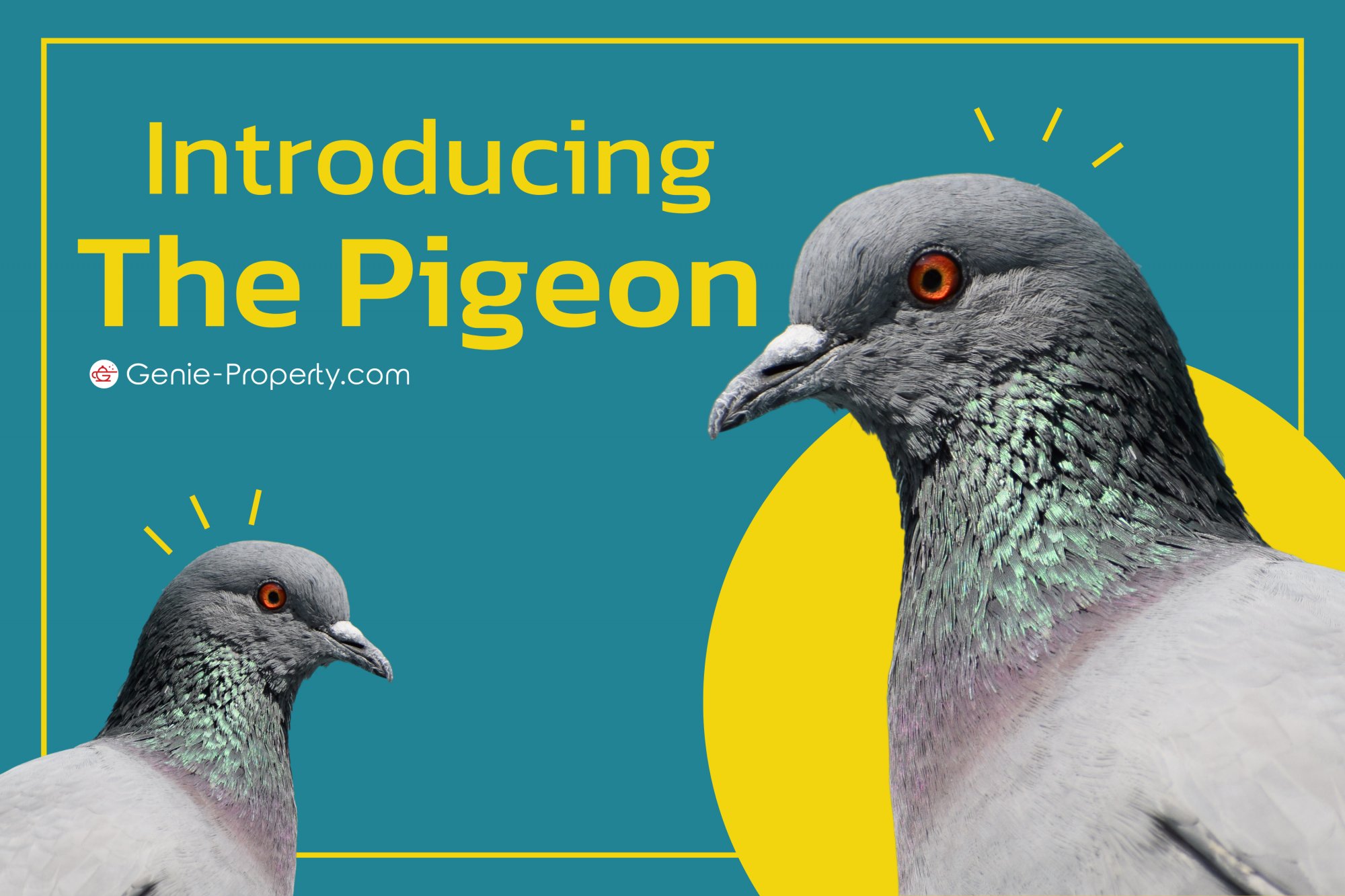
Introducing the pigeon
The pigeon, scientifically known as Columba livia, belongs to the same family as doves (Columbidae). Pigeons originate from the regions of Europe, northern Africa, and western Asia before spreading and adapting to various climates. Pigeons prefer to inhabit agricultural areas and urban environments, often utilizing cliff faces or rocky edges as nesting sites. While the majority of pigeons are light gray, did you know that they can come in up to five different colors?
- Blue-gray with black bars
- Checker pattern
- Cocoa (ash red and brown)
- Black
- White
Furthermore, pigeons are also a symbol of "peace" internationally, often depicted as an olive branch carried by a pigeon.
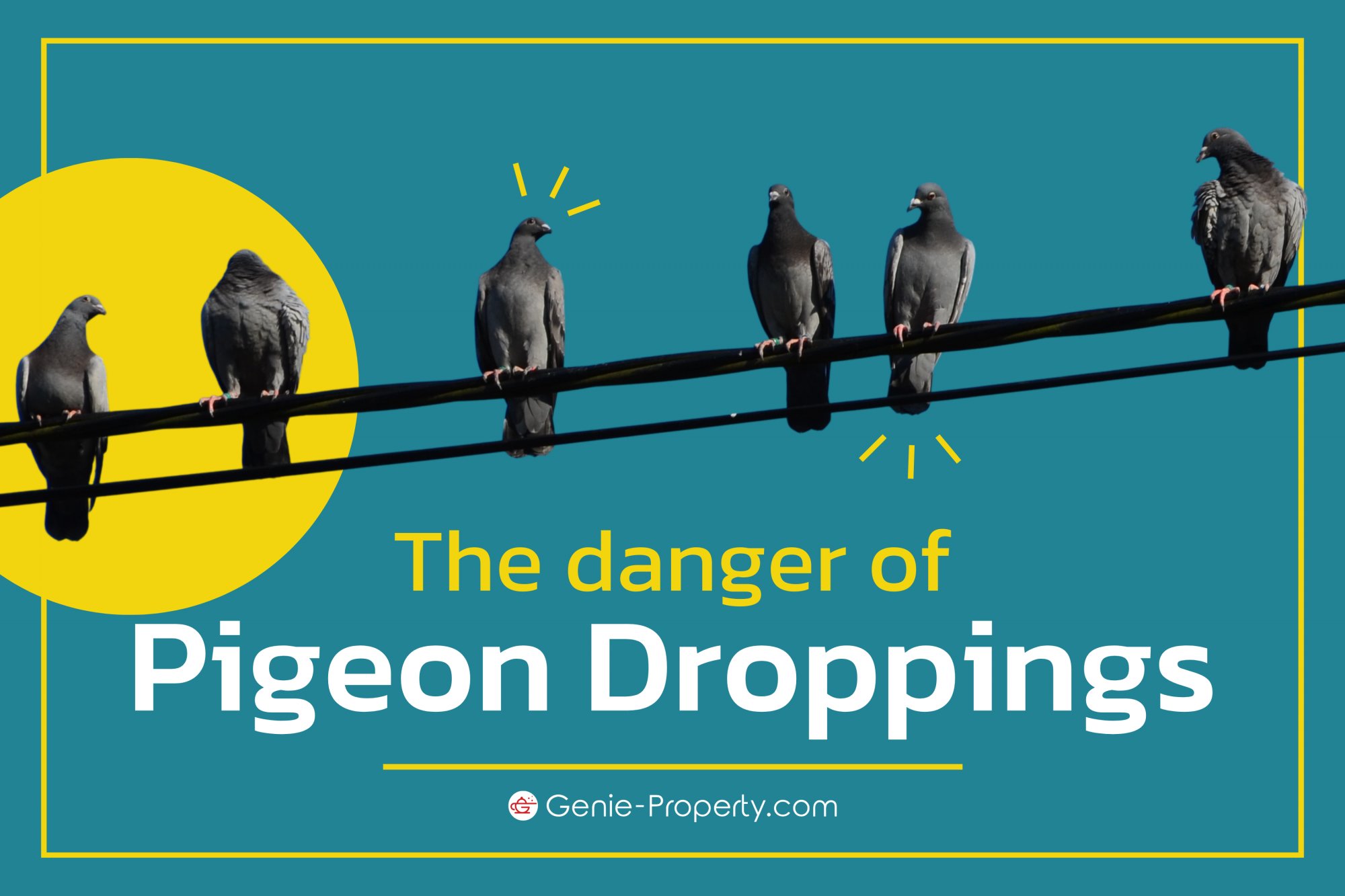
The danger of pigeon droppings
Many of you may be facing encounters with pigeons that like to fly and perch on the balconies of some condominiums, even to the extent of building nests and families, turning into large flocks of pigeons (I'm requesting to stay freely, hehehe). Apart from being annoying, pigeon droppings also create a mess that can lead to infectious diseases. The droppings of pigeons contain a fungus called Cryptococcus neoformans or Cryptococcosis, which can be transmitted through "contact" and "inhalation." The infectious diseases caused by pigeon droppings can be categorized as follows:
1. Cryptococcosis
Generally, this disease occurs in animals that become infected with the Cryptococcus neoformans fungus, most commonly found in animals such as cats and dogs that may suffer from this disease. This type of fungus can mostly be found in pigeon droppings, sparrow droppings, and crow droppings.
The Cryptococcus neoformans fungus can indeed cause diseases in animals, including humans. It commonly affects individuals with weakened immune systems, which can occur through breathing in or inhaling pigeon droppings or through contact with birds or their droppings. Symptoms may include fever, bloody cough, chest pain, and more. Individuals with weakened immune systems are at a higher risk of infection, up to 1,000 times more than normal individuals.
2. Meningoencephalitis
Generally, meningoencephalitis can be caused by various pathogens, viruses, or bacteria found in our living environment or through partially cooked or raw food that we consume. In addition, we can also encounter these pathogens in pigeon droppings, which are particularly rich in the Cryptococcus fungus.
Infection can occur when we inadvertently breathe in dried pigeon droppings or come into contact with the birds or their droppings and subsequently fail to wash our hands and unknowingly handle food. This fungus can also be transmitted through the digestive system.
Based on the information Genie has researched from the Infectious Disease and Carrier Data Center, it was found that the factor contributing to the occurrence of meningoencephalitis in both children and adults is the Cryptococcus neoformans fungus, which is present in pigeon droppings up to 9.09%.
3. Pneumonia
This disease is also caused by the same fungus. If we inhale dried pigeon droppings into our lungs, it can lead to pneumonia. The infection begins in the lungs and can spread to other parts of the body. Symptoms may include fever, darkened complexion, dizziness, and, in severe cases, infection of the bloodstream, which can be fatal.
As you can see, pigeon droppings can be highly harmful to us. Therefore, we should avoid getting close to pigeons, whether in public parks or if they happen to be nesting on our balconies. This might be challenging because these birds tend to secretly build nests in the corners and corners of our balconies. Today, Genie has provided a few simple methods to prevent pigeons from building nests on our balcony rims. Let's take a look together.

Methods to Keep Birds from Building Nests on Condo Balconies
The main problem faced by homeowners or condo residents is often caused by birds, particularly sparrows, that like to build nests on the balcony or roof of the house. Today, we have gathered four methods to prevent birds from nesting on our balconies. Let's take a look at what Genie has to suggest.
1. CD Reflective Discs
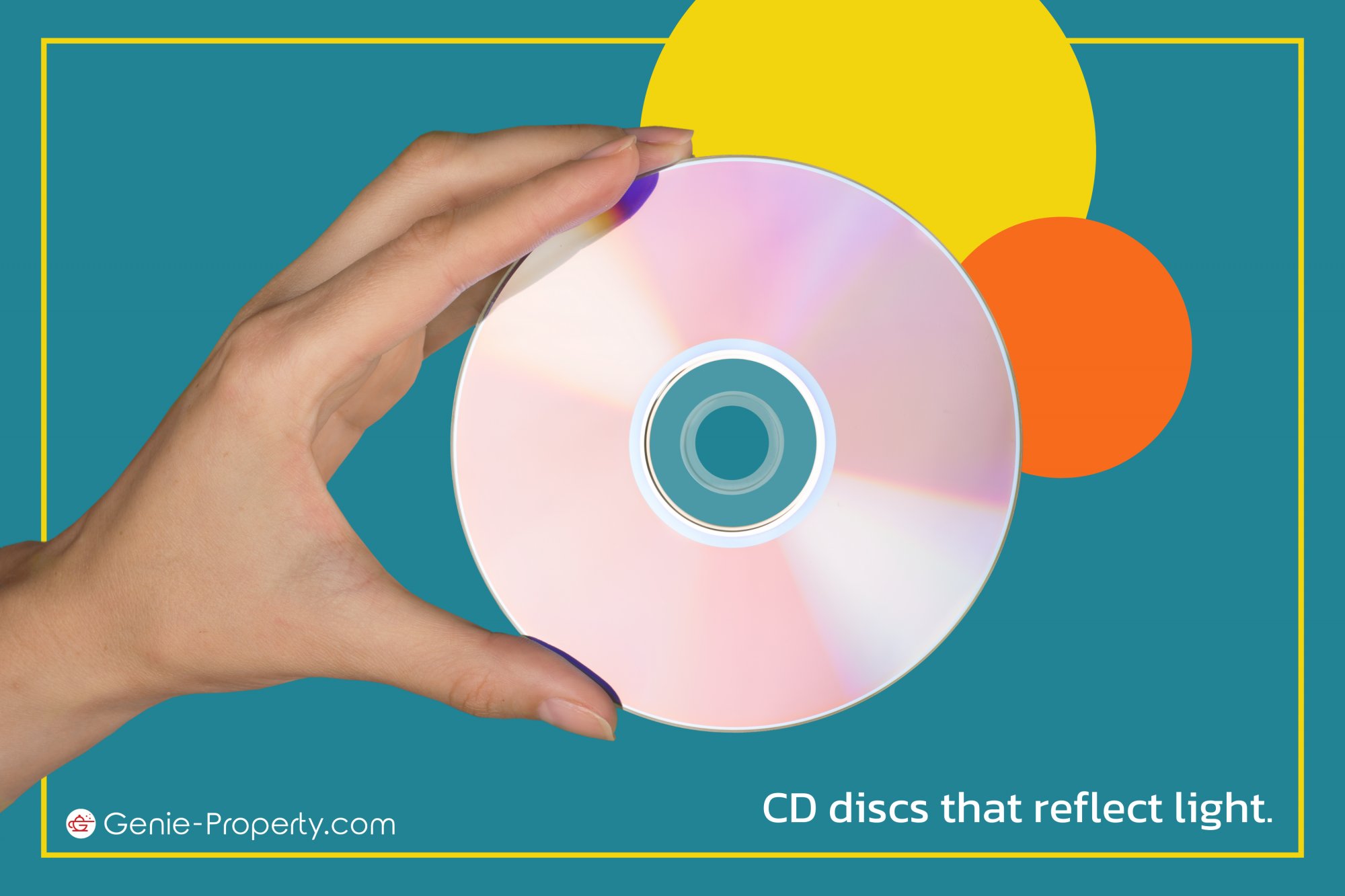
By using this method, we can definitely prevent those sparrows from perching on our condo balconies. Sparrows dislike the colorful reflections and flickering lights. What we need to do is take some CD discs, thread them together, and hang them along the balcony edge or near the windows. With this, the sparrows will no longer bother you, my friends.
2. Hanging Wind Chimes or Mobiles
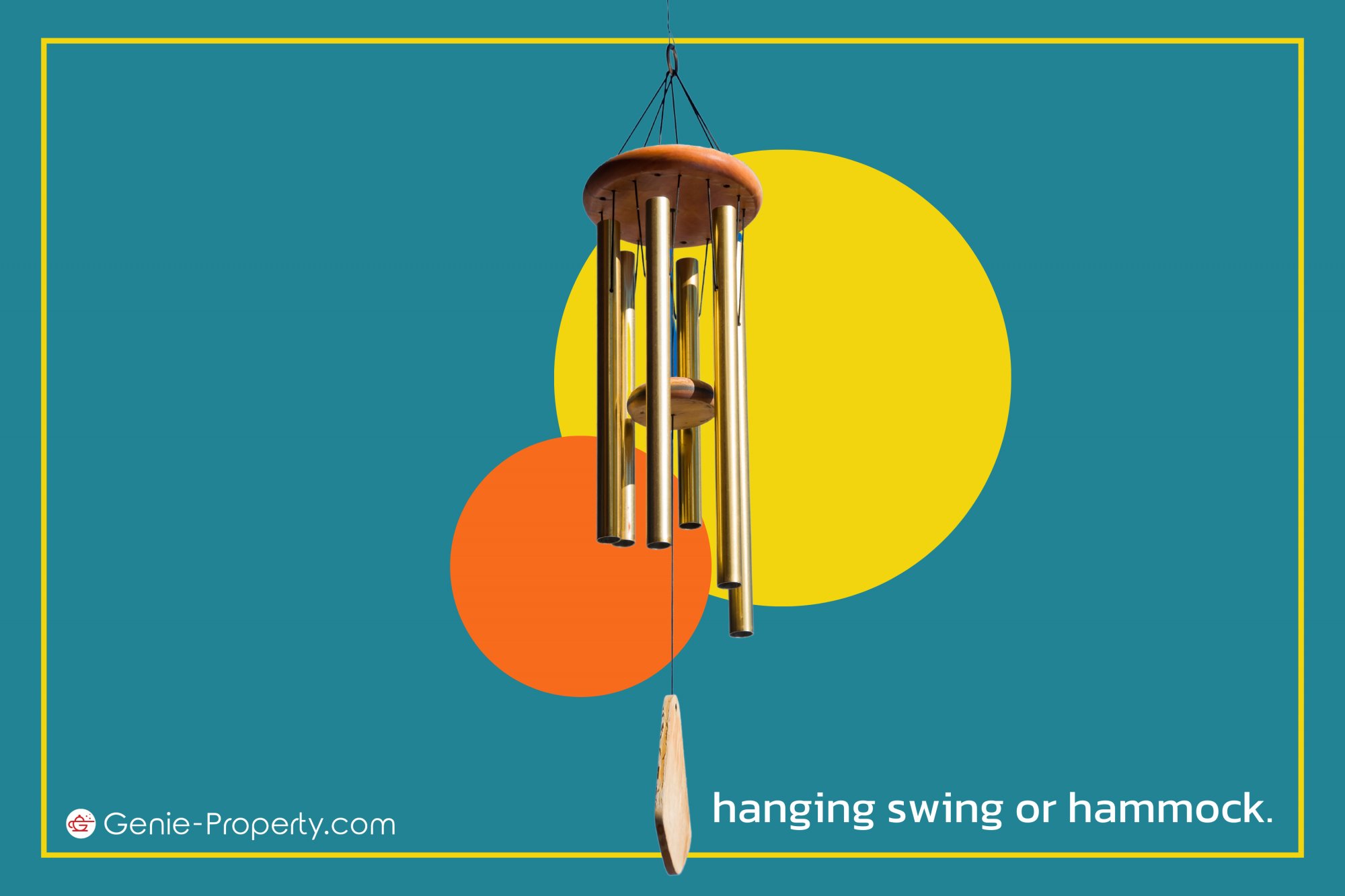
For deterring birds using this method, not only will it prevent sparrows from bothering us, but it will also enhance the beauty of our balcony. Sparrows dislike the tinkling sound produced by wind chimes or mobiles. They are afraid and startled by it, so they won't dare to come back again.
3. Buckle Straps or Cable Ties
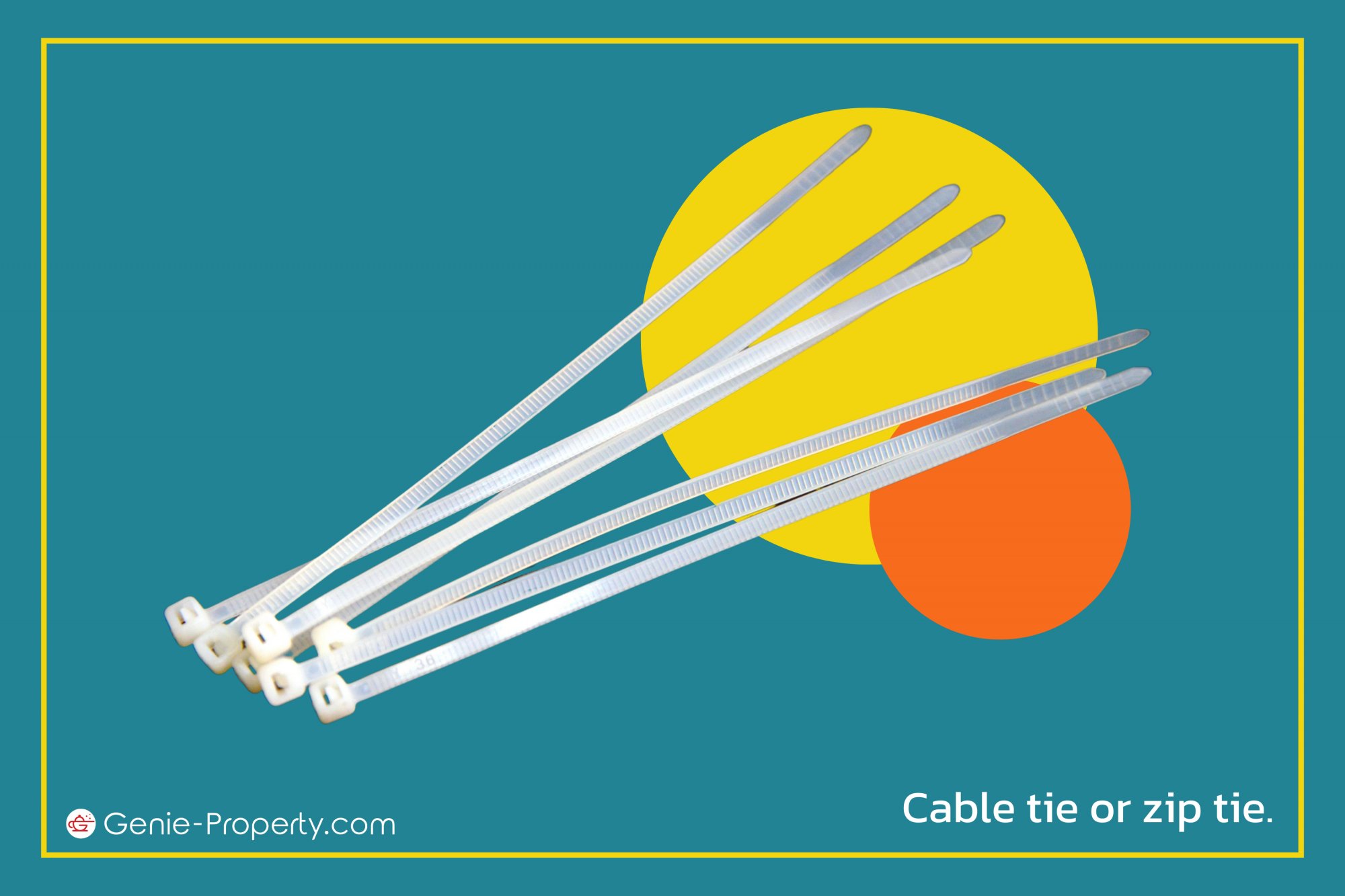
This method may require some investment, but it's definitely worth it for peace of mind and safety. To implement this method, you will need buckle straps or cable ties. Use them to secure the railing of the balcony where sparrows tend to perch, but be sure not to cut off the sharp ends. These sharp ends will prevent the sparrows from landing on the balcony railing in the future.
4. Mothballs
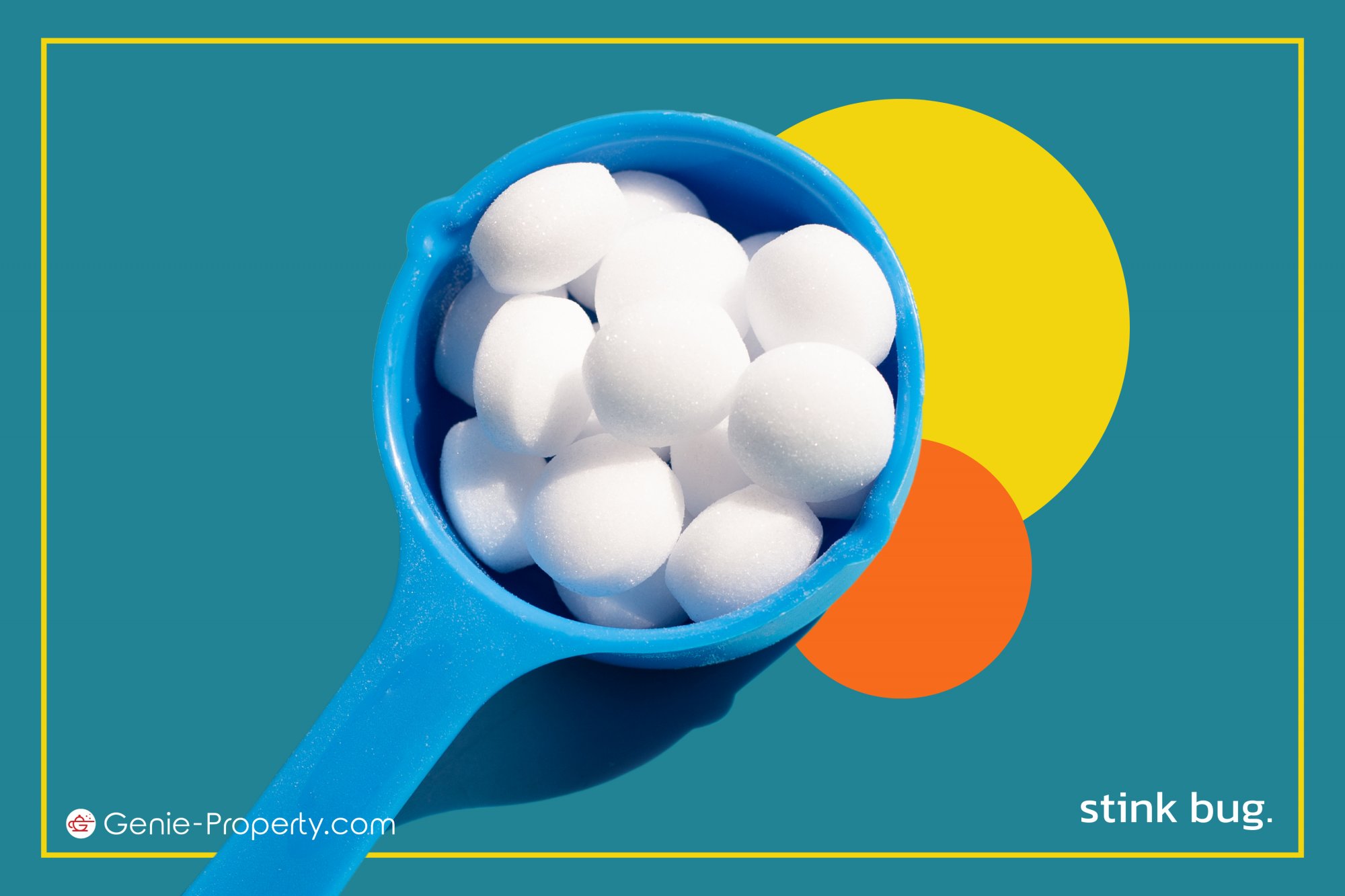
Apart from using mothballs to eliminate musty odors or repel insects, did you know that mothballs can also deter sparrows? Simply place mothballs in a container and position it along the balcony railing. This will prevent sparrows from disturbing you anymore. However, if you choose to use this method, remember to replace the mothballs regularly as their scent fades.
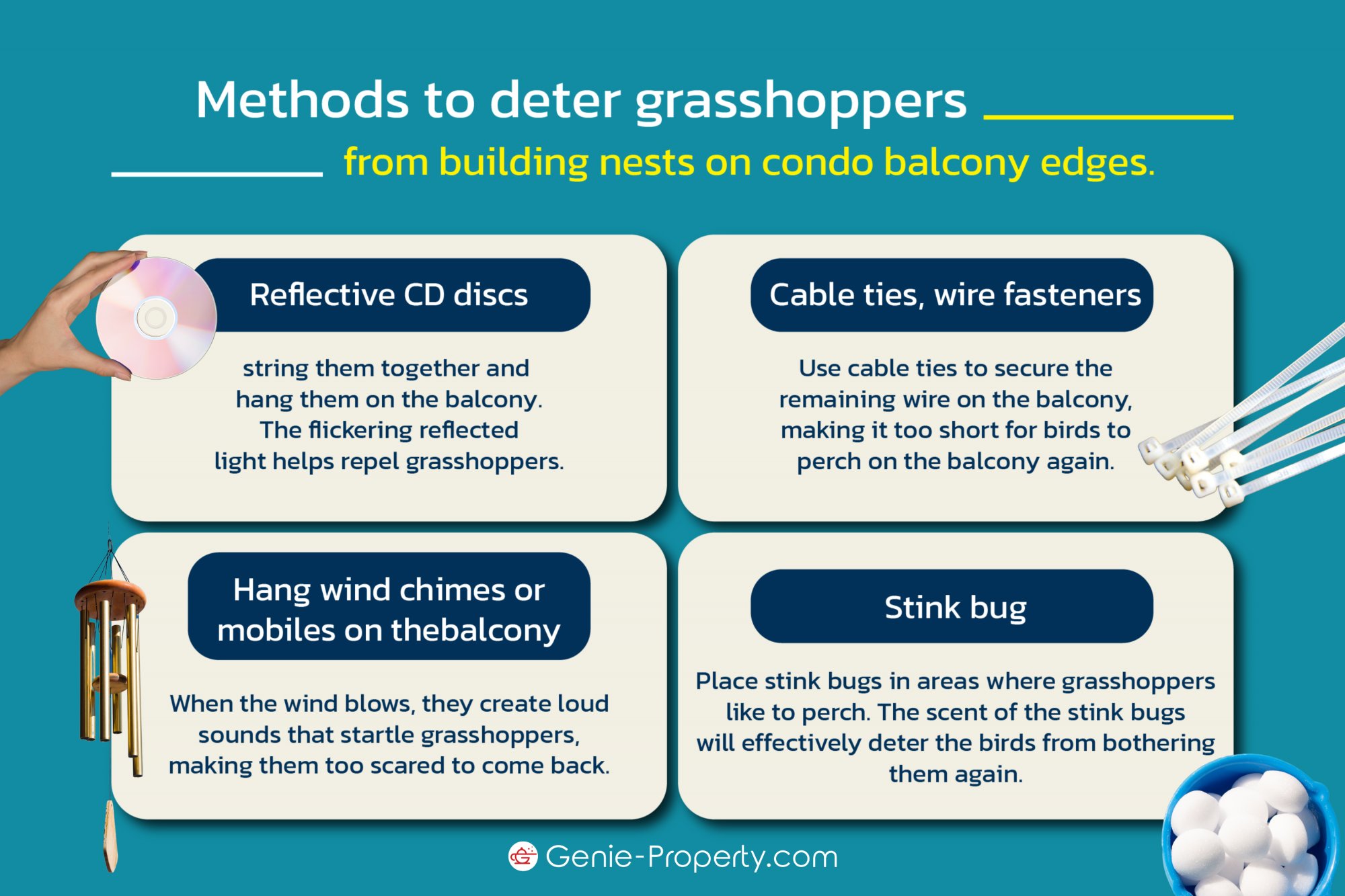
How about the method of deterring sparrows from bothering our balcony? There are simple ways to do it using materials that can be found at home. Keep in mind that the methods mentioned by Genie may not permanently eliminate sparrows, but they can at least help prevent them from coming close to our condo balcony. Importantly, if you notice any dirt or debris left by sparrows, such as sparrow droppings or feathers, make sure to clean it up quickly. As Genie mentioned earlier, sparrows can be quite dangerous, and it's crucial to eliminate any remaining potential sources of disease. Fortunately, the methods for preventing disease transmission from sparrows are relatively simple. Let's categorize them as follows
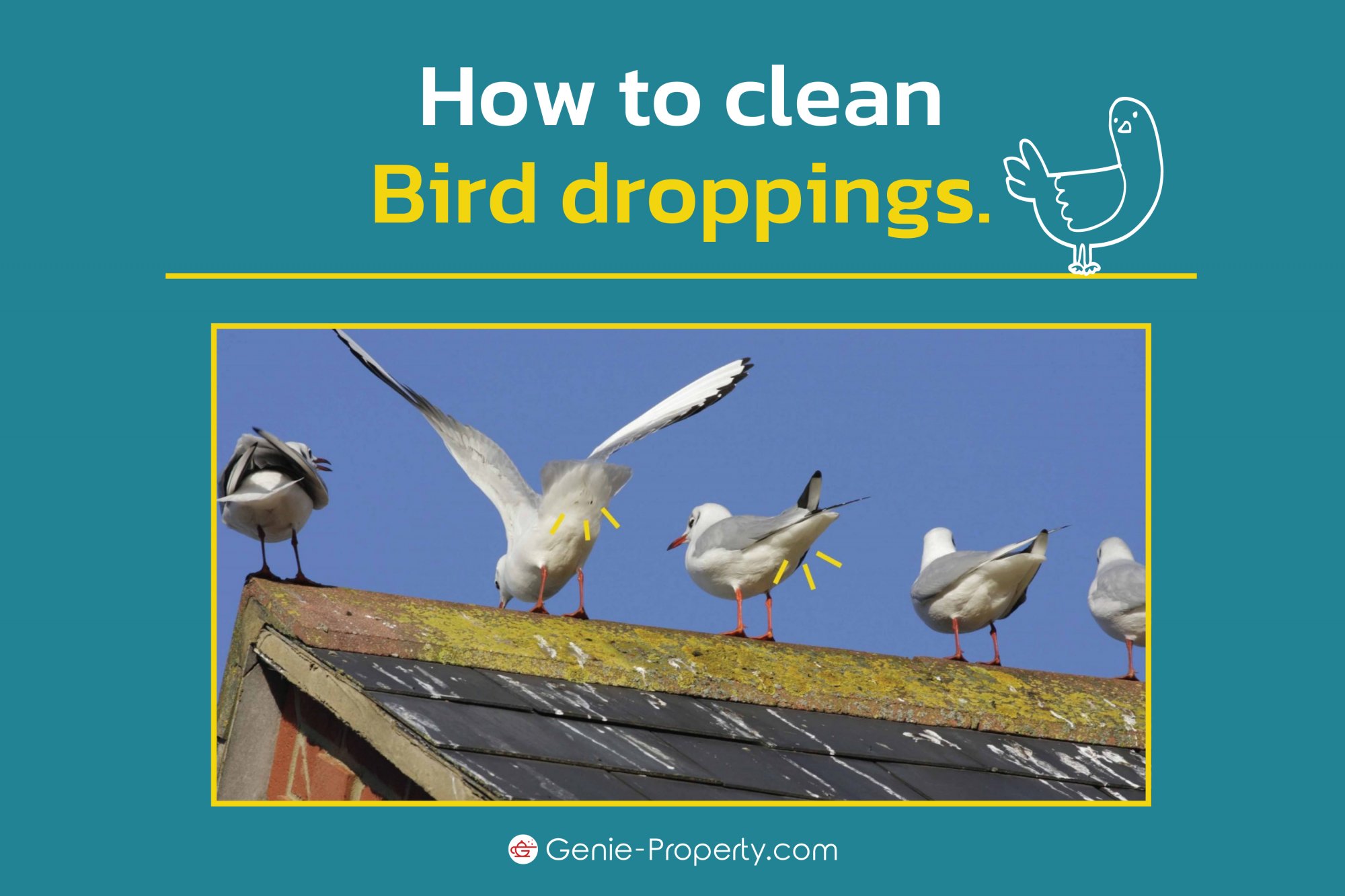
During the cleaning process, even when dealing with dry bird droppings, we need to be cautious and avoid direct contact. It's recommended to wear tight-fitting clothing, such as long pants, long-sleeved shirts, waterproof gloves, a filtering mask, and waterproof shoes or shoe covers.
1. To clean the floor of the condo balcony, mix about 2-3 buckets of plain water with a disinfectant solution. You can use any brand of disinfectant. Then, pour the mixture over the balcony to soften the dried bird droppings, making them easier to clean.
2. Once the dried droppings have softened, take a mixture of disinfectant and floor cleaner that you prepared earlier and let it sit for about 10 minutes. After that, use a floor scrubber to clean the areas with bird droppings. Once done, rinse the area with water to remove any residue.
3. Use a coconut broom to sweep away the water and bird droppings that you cleaned. Then, use a clean cloth to dry the area completely and ensure that all bird droppings are gone.
How did it go with the methods of deterring sparrows from bothering our balcony? Did you find out where they come from? Additionally, now you also know about the potential dangers of bird droppings. It's essential to follow Genie's methods if you still have sparrows building nests on your condo balcony. I hope this information is helpful to you.
You can follow and support Genie and the writing team by clicking 'Like' on Facebook: Genie-Property.com or contacting them at 093-232-9888 or 064-931-8666. You can also stay updated on real estate news and lifestyle through their website: www.genie-property.com.
Special thanks to the sources
Thairath
Rama Channel
Thaicleaningtips

